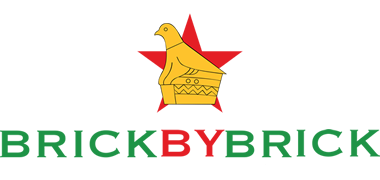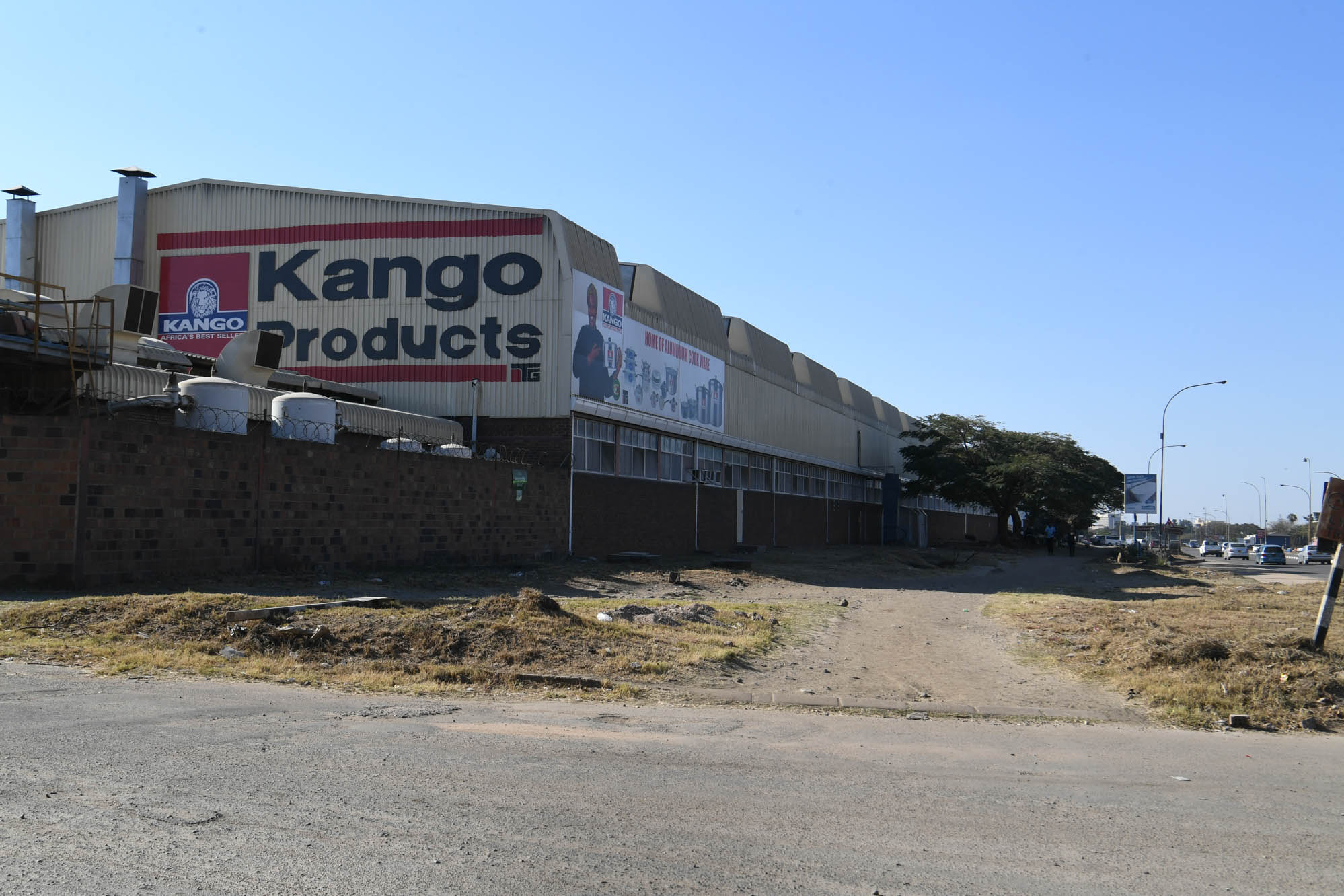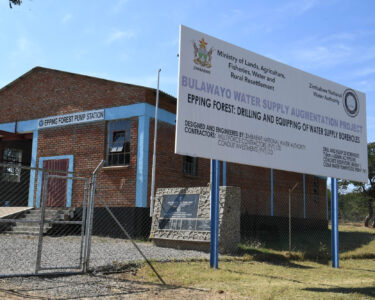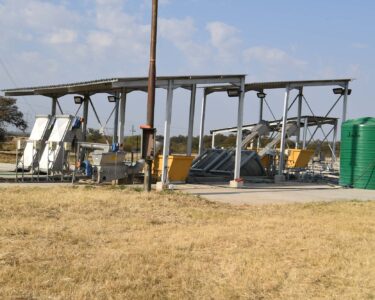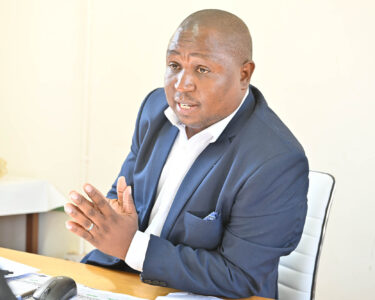When the Secretary for Provincial Affairs and Devolution for Bulawayo Province, Paul Nyoni, speaks about his province, it is with conviction and passion. He brushes aside any suggestion that Bulawayo Province is marginalised; and has the facts to support his argument. According to Nyoni, under the Second Republic, the revival of Bulawayo Province has gathered momentum so much that he believes the province’s per capita Gross Domestic Product (GDP) will soon surpass Harare’s.
The sceptics will be tempted to dismiss Nyoni’s optimism as mere hallucinations, but indications on the ground are proof indeed that Bulawayo Province is steadily regaining its status as the country’s industrial hub. Away from the prying eyes, new companies are being born while closed firms are enjoying a new lease of life. Old and new investors are making a beeline for Bulawayo Province thanks to the Second Republic’s concerted efforts to solve the province’s perennial water and power challenges.
Despite evidence to the contrary, the naysayers are keeping their heads firmly buried in the ground, ostrich-style. Why is this so? Nyoni explains: “Naturally, there are those people who are obsessed with certain household names of the past. For example, some people can’t see beyond [towel manufacturer] Merlin, but a much bigger manufacturing company has just been opened right next to it. My question is: Do you want Merlin or you want a towel? You want a towel.”
Enjoy this captivating interview, in which the Bulawayo-born Nyoni predicts that Zimbabwe will solve its power challenges “way, way ahead of South Africa”! Editor-in-Chief Munyaradzi Huni conducted the interview during a recent visit to the City of Kings and Queens.
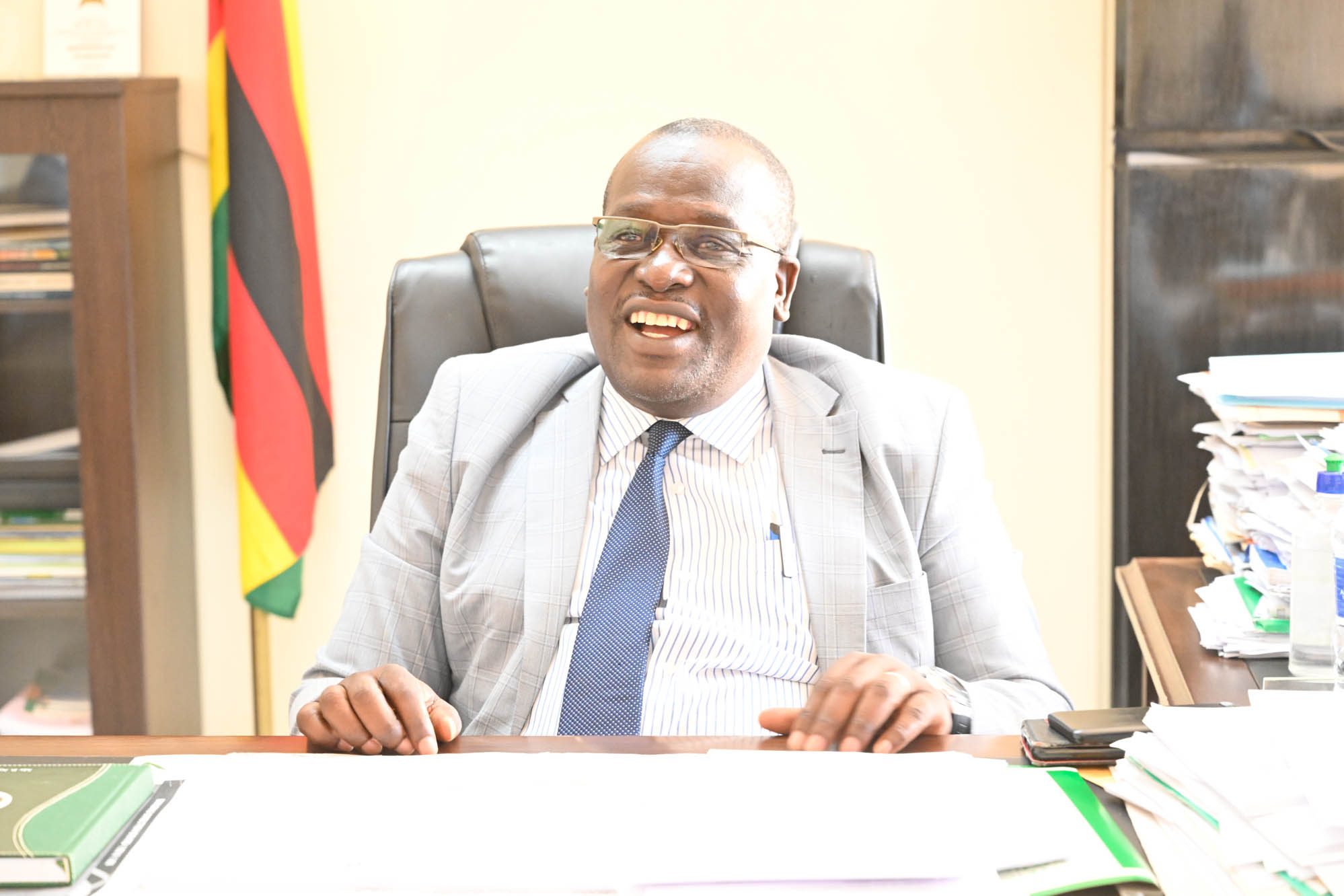
Huni: Can you give us a brief profile of Bulawayo Province in terms of its GDP, geographical size and population?
Nyoni: Bulawayo Province sits on a mere 1,700 hectares of land, making it one of the country’s smallest provinces. Its population stands at just under 700,000 according to the 2022 Population Census. In GDP terms, Bulawayo is second only to Harare. According to the 2020 ZimStat report, our GDP was ZWL$155 billion. Given its population size, Bulawayo Metropolitan Province has the highest per capita GDP of the country’s 10 provinces, a fact confirmed by the UNDP Human Development Index.
However, we are not celebrating this landmark achievement, simply because we are not yet in the upper middle-income bracket as articulated by His Excellency, President Emmerson Mnangagwa. We are not happy to be the best of the rest.
Bulawayo Province has five districts – Mzilikazi, Imbizo, Khami, Reigate and Bulawayo Central. When the restructuring of the province was done, it was felt that these districts could be run from the provincial office. Although the districts are clearly demarcated, they do not have District Development Coordinators (DDCs).
Huni: In your own assessment, what makes Bulawayo Metropolitan Province unique?
Nyoni: Firstly, what makes this province unique is the manufacturing infrastructure built over the years. For the avoidance of doubt, when I talk about manufacturing infrastructure, I am not referring to shells, some of which are lying idle now. I am talking about infrastructure in holistic terms. Those factory shells are served by railway lines. All the factories you see, lying idle or functioning, are connected to the railway and road network. That, on its own, is an attractive proposition for the would-be investor.
Secondly, Bulawayo is at the epicentre of agricultural activities, notably livestock. This is why, to this day, Bulawayo is home to the largest number of leather tanneries and agro-processors. Agro-processing, in particular, is a vital cog in our bid to grow our GDP. The infrastructure needed for agro-processing as well as value addition for leatherwear and accessories and textiles already exists. We can only improve on it.
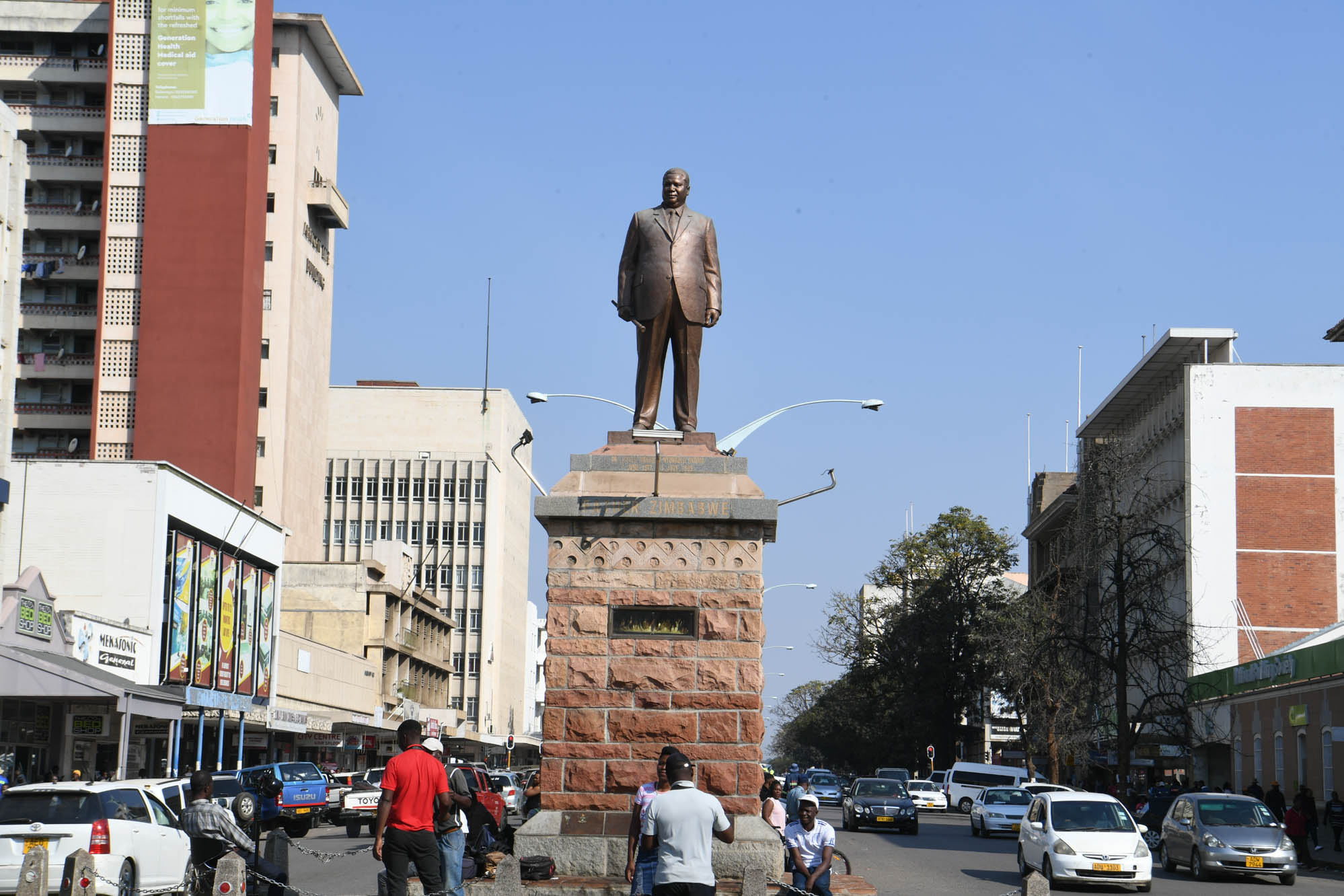
Thirdly, Bulawayo is the hub of the national railway system, which links the province to neighboring countries such as South Africa, Botswana and Zambia via Beitbridge, Plumtree and Victoria Falls, respectively. It is also worth mentioning that some goods destined for the Mozambican port of Beira are handled either here [Bulawayo] or at Dabuka. This gives Bulawayo several advantages in terms of trade facilitation.
During its heydays, the National Railways of Zimbabwe (NRZ) moved as much as 20 million tonnes of goods per year, with a workforce of 19,000. This is no longer the case, but on the credit side is the fact that we have the infrastructure to revive NRZ. I think these three things make Bulawayo Province unique.
Huni: Over the years, things went down in Bulawayo Province, leading to the closure of many companies. What exactly went wrong?
Nyoni: First and foremost, I would say the downturn was precipitated by the liberalisation of the economy under the [International Monetary Fund] IMF-prescribed Economic Structural Adjustment Programme (Esap) in the 1990s. As you will probably recall, Esap the sudden opening up of the economy exposed our nascent industries to global competition, with devastating consequences. The textile and leather industries were particularly hard hit. The Merlins, National Blankets, Cotton Printers, Security Mills, etc, suddenly found themselves at the mercy of cheaply priced imports.
Overnight, the market was flooded with not only cheap leather shoes, but plastic ones as well. The following statistics tell the story. In 1992 or thereabouts, Zimbabwe produced 13 million pairs of shoes. In 2022, the number had plummeted to around 1.3 million. Have we stopped wearing shoes? No! People are opting for imports.
The problem, as I see it, is that we took our eyes off the ball in terms of protecting our local industries. We are now going back to the drawing board by devising ways to protect our industries. For example, we now have a Leather Sector Strategy which was launched by Vice President [Constantino] Chiwenga in 2021. This strategy will go a long way in reviving Bulawayo-based leather companies.
Huni: We will come to the plans to revive the sector a little later. Some people say, most companies in Bulawayo closed due to marginalisation by the central government. What is your response?
Nyoni: It’s hard for me to agree with that kind of thinking. In my own assessment, Esap and the devastating effects of sanctions post 2001 caused industries to close. Marginalisation, no! I don’t think that holds any water.
It was a combination of these two factors. Both G&D Shoes and Bata Shoe Company succumbed to these twin pressures. In fact, the entire leather sector was squeezed, but it was more pronounced in Bulawayo. The textile industry — Cone Textiles, National Blankets, Merlin, etc — also felt the pinch.
So did the Cold Storage Company (CSC), which relied to a large extent on beef exports to the European Union (EU). When relations between Zimbabwe and the EU soured, the entire beef value chain, from the poor cattle owner in the village to the slaughterman at the CSC abattoirs was affected. Marginalisation? It’s an argument that I find hard to swallow.
I think the word “marginalisation” becomes fashionable when companies relocate. For example, just recently, [clothes retailer] Edgars announced plans to relocate its headquarters to Harare. We engaged them and they told us their side of the story. The truth of the matter is that Edgars is not relocating any of its shops or factories to Harare. It’s just that they have more branches in the north of the country than in the south. Therefore, it makes more economic sense for them to run their business from a more central location.
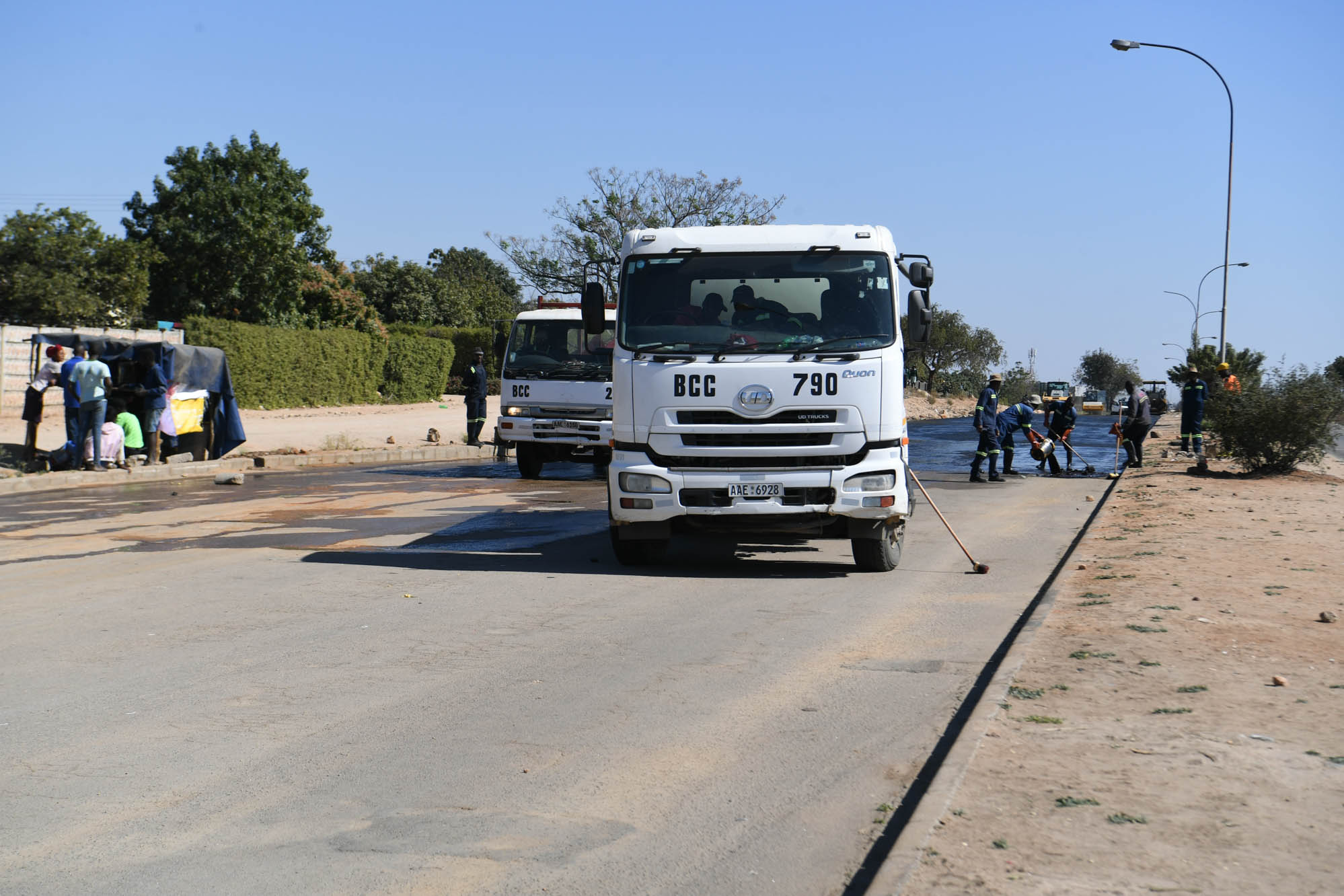
It’s not all doom and gloom, because even the Edgars branch near Robert Tredgold Building, that has since closed its doors, is reopening at Ascot. It’s like a Harare company closing one its branches in the Central Business District and opening a new one in Avondale. According to Edgars management, the sheer number of branches in Harare alone is enough justification to relocate their head office to Harare. Their Bulawayo factories are not going anywhere. They will continue to expand here. So marginalisation, no, no, no.
No doubt, one of the sectors that has felt the pinch of sanctions is the NRZ. Our railway system is based on [American conglomerate] General Electric, which makes it difficult to procure the necessary spares.
Huni: In terms of employment, quite a number of people also lost their jobs, isn’t it?
Nyoni: Very true. Thousands of workers lost their jobs, delivering a devastating blow to the provincial economy. When NRZ hit a rough patch, quite a number of heavy industries downstream, for example Zeco Holdings, found themselves downsizing.
Huni: Let’s go into specifics. What exactly happened to the NRZ and why are things that bad?
Nyoni: The simple answer is obviously the lack of investment funding created by the imposition of sanctions on Zimbabwe. Remember the bulk of mega infrastructural projects, whether NRZ, PTC [Postal and Telecommunications Corporation], Zesa [Zimbabwe Electricity Supply Authority, etc] were traditionally funded by international financial institutions. In the absence of external loans, it is hard for parastals like the NRZ to recapitalise or retool.
Where the NRZ had 50 locomotives yesterday, today they have only 13. Even the railway line itself gets to a point where it needs refurbishment. In fact, some entire sections need to be uprooted and new tracks installed. So the investment funding gap is a very big for the NRZ.
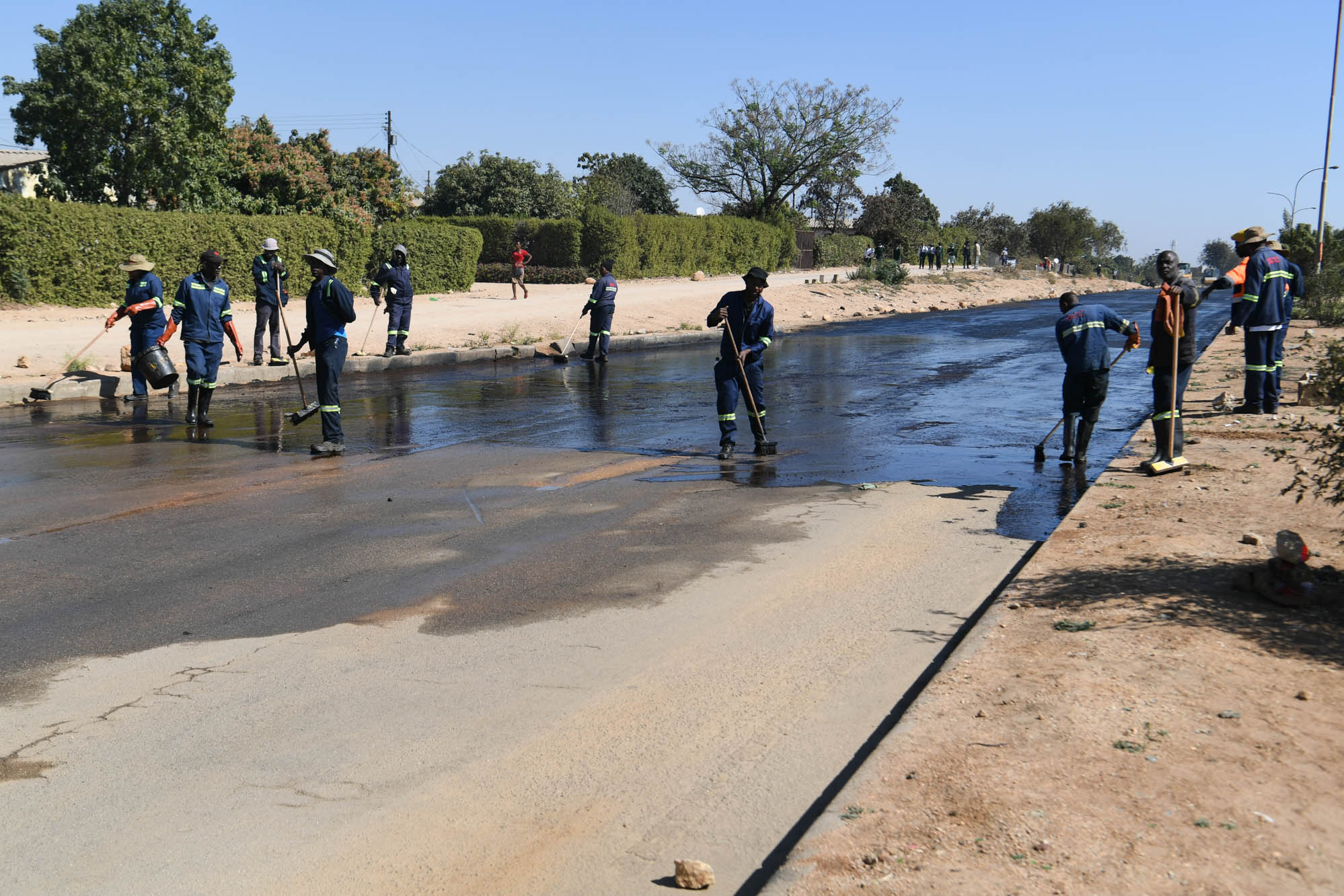
shells, some of which are lying idle now. I am talking about infrastructure in holistic terms,” says Secretary for Provincial Affairs and Devolution – Bulawayo Province, Paul Nyoni:
Huni: So what are you doing to revive the railway sector in Bulawayo?
Nyoni: Well, a lot of things are happening behind the scenes. On the global front, you must have read in the press on ongoing talks between the government and our Indian counterparts. A breakthrough is imminent.
On the domestic front, the mining and other primary industries are getting back on their feet, translating to a surge in demand for logistics services. In this respect, we are in discussions with new mining investors to lend the NRZ a helping hand. At the end of the day, if they help us get our act together, a revitalised NRZ is going to be just what the doctor ordered.
Without giving too much away, I am aware that there are discussions with Manhize Iron and Steel Company and Zulu Lithium, that latter of which I helped broker. Zulu Lithium officials came to my office and I accompanied them to the NRZ offices where fruitful discussions were held. This is still work in progress, which I am optimistic will bring about positive results.
In other words, we are looking at Public-Private Partnerships or PPPs as one of our options. The Treasury is also playing its part. Meanwhile, the NRZ is refurbishing some of its old locomotives and wagons. A major worry, though, is that some of the old equipment has been vandalized or cannibalised for spares. But I am sure the refurbishment exercise will proceed at a much faster pace once the Treasury avails more money for refurbishment.
We cannot afford to sit back because Bulawayo’s economy depends heavily on a healthy railway system. For us, that is an integral aspect of Vision 2030. In any case, we are going to need to move more and more coal once the steel and lithium giants cited above come on stream. For example, coal must be transported by rail from Hwange to Manhize in Chivhu. We can’t do that if NRZ remains incapacitated or because it has no locomotives. For me, that is a non-starter.
Huni: There are many people in Bulawayo who are looking forward to the revival of the NRZ. What message do you want to give them? Is there a timeline when the NRZ will be up and running?
Nyoni: During National Development Strategy 1 (NDS1), which ends in 2025, there will be palpable changes at the NRZ. The kind of changes that people can measure. This must happen and it will happen in order to unlock opportunities in other sectors. You cannot hope to resuscitate Ziscosteel without the NRZ. Neither is it possible for Disco to be become the largest integrated steel plant in Africa without an efficient railway system. Same with Zulu Lithium. The long and short of it is NRZ must be revived, as a matter of urgency. Not only for the sake of the provincial economy, but for the overall benefit of the national economy. So during this first phase (NDS1), the face of the railways will change. We can’t afford to fail.
Huni: I really like your passion and confidence. Where is all this passion and confidence coming from?
Nyoni: I am a child of the railways in the sense that our rural area was close to the railway line. My paternal and maternal grandfathers and my own father worked for the NRZ at one time or another. So I am talking about a long history. Yes, it [reviving the NRZ] must be done and it will be done during NDS1. By December 2025, we should be talking about something else, like expansion.
Huni: The Cold Storage Company (CSC) used to be the pride of Bulawayo. What exactly happened to CSC and how far are the plans for its revival?
Nyoni: Once the EU turned its back on us, it was not easy to find alternative markets because it does not happen overnight. That is why you may have observed, in the early 2000s, the government made frantic efforts to open new markets among the Moslem communities in the Far East (Malaysia, Indonesia, etc). This was designed to make up for the loss of the lucrative EU market from whose earnings the CSC was able to re-equip, buy spares, etc. As long as the CSC was able to export beef to the EU, it could sustain itself.
CSC was a big and trusted brand, both locally and overseas. That is why during the 1980s and early 1990s, all those little abattoirs struggled for customers. If your mother sent you to the local butchery, she wanted to see the trademark CSC brand. That dark blue CSC ink was the hallmark of the best quality meat.

We have done presentations here in Bulawayo to the UN Rapporteur [on sanctions] and one of the things I pointed out was the number of agreements already signed with multilateral funding institutions, who were willing to assist the NRZ and CSC, not to mention the Bulawayo City Council. Following the politics of 2000-2001, triggered by the Land Reform Programme and the reaction of the Western world, those agreements were scrapped.
For CSC, the straw that broke the camel’s back was the loss of the EU market and the unbearably long time it took to secure a similar market. Things went south until we almost reached rock bottom, from where we are now trying to extricate ourselves. It will take a considerable amount of time and resources because, in the meantime, the small abattoirs have taken advantage of the CSC’s absence to grow their market. However, there is still room for the CSC. Bulawayo is right at the heart of the livestock region and we should use that to our advantage.
Initially, people blamed the collapse of the CSC on foot-and-mouth disease, but that was not the case. Foot-and-mouth is common in the tropics. It has broken out in Botswana, South Africa, etc. To me, this talk about foot-and-mouth was pure fiction. The bottom line is that the CSC collapse was precipitated by the imposition of sanctions on Zimbabwe.
Huni: I have read reports about efforts to revive the CSC. What efforts are you making to revive it?
Nyoni: If you go to the factory right now, you will find that it’s ready to start processing meat. But remember, we are talking about a supply chain which started with a “Mr Moyo” deep down in the village, who reared his cattle until they were delivered to the CSC. In addition, CSC had its own network of farms where the parastatal reared cattle for slaughter at its abattoirs whether in Bulawayo, Masvingo, Harare or Kadoma, etc. However, it will take time to revive this expansive supply chain.
The reborn CSC will have massive slaughtering capacity, much bigger than anything you will ever see at the small abattoirs around. Even the Vice President, Dr Chiwenga, has been to CSC and was greatly impressed with what he saw. The newly acquired machinery is already up and running. The only stumbling block is the supply chain, which will take some time to normalise. Until we get those markets back again, get those farms up and running, we will continue to struggle. But we are very confident the CSC will be back with a bang.
Huni: Is what you are saying happening on the ground?
Nyoni: As you will appreciate, this is a capital-intensive industry. So the priority was on acquiring state-of-the-art equipment. After acquiring the machinery, the CSC is now looking at the supply chain, with emphasis on education or changing mindsets. It’s more or less like Pfumvudza/Intwasa, where extension workers are working flat out to convince farmers to do things differently. I understand the CSC is engaging everyone involved in the supply chain. This is a confidence issue which will take some time. Once the supply chain is fixed, the CSC will be back in business because the equipment is already in place.
Huni: Bulawayo Province was also known as the country’s manufacturing hub, but this is no longer the case. Many manufacturing companies folded. What are you doing to revive this sector?
Nyoni: I always tell anyone who cares to ask that our agro-processing industry is up there now. Capacity utilisation is above average. What exactly do I mean by that? I am talking about your United Refineries, your Arenel, your Lobels, your National Foods and you can add a whole layer of new players in the sector. What used to be Merlin is now Sunset Marketing, a major agro-processer, which is into mealie-meal, edible oils, etc.
The majority of consumers knew United Refineries (UR) as a company that produces edible oils, cooking oil, margarine, bath soaps, etc. That was the old United Refineries. If you walked into a supermarket, you would find scores of products with the UR logo. However, today that same United Refineries has now diversified into mealie-meal and stockfeeds. In fact, the company have doubled its capacity in the last four to five years.
Everywhere you look, you will see very exciting developments in agro-processing. Take Arenel, for example. It is now five times bigger than it was. Why? Under the New Dispensation, they applied and were granted Special Economic Zone status, which paved the way for new investors. Arenel is now into drinks, water, cereals and other fast moving consumer goods. Until a few years ago, Arenel was synonymous with biscuits. Not anymore. It is now into cordial drinks, mineral water, cereals and other fast moving consumer goods.
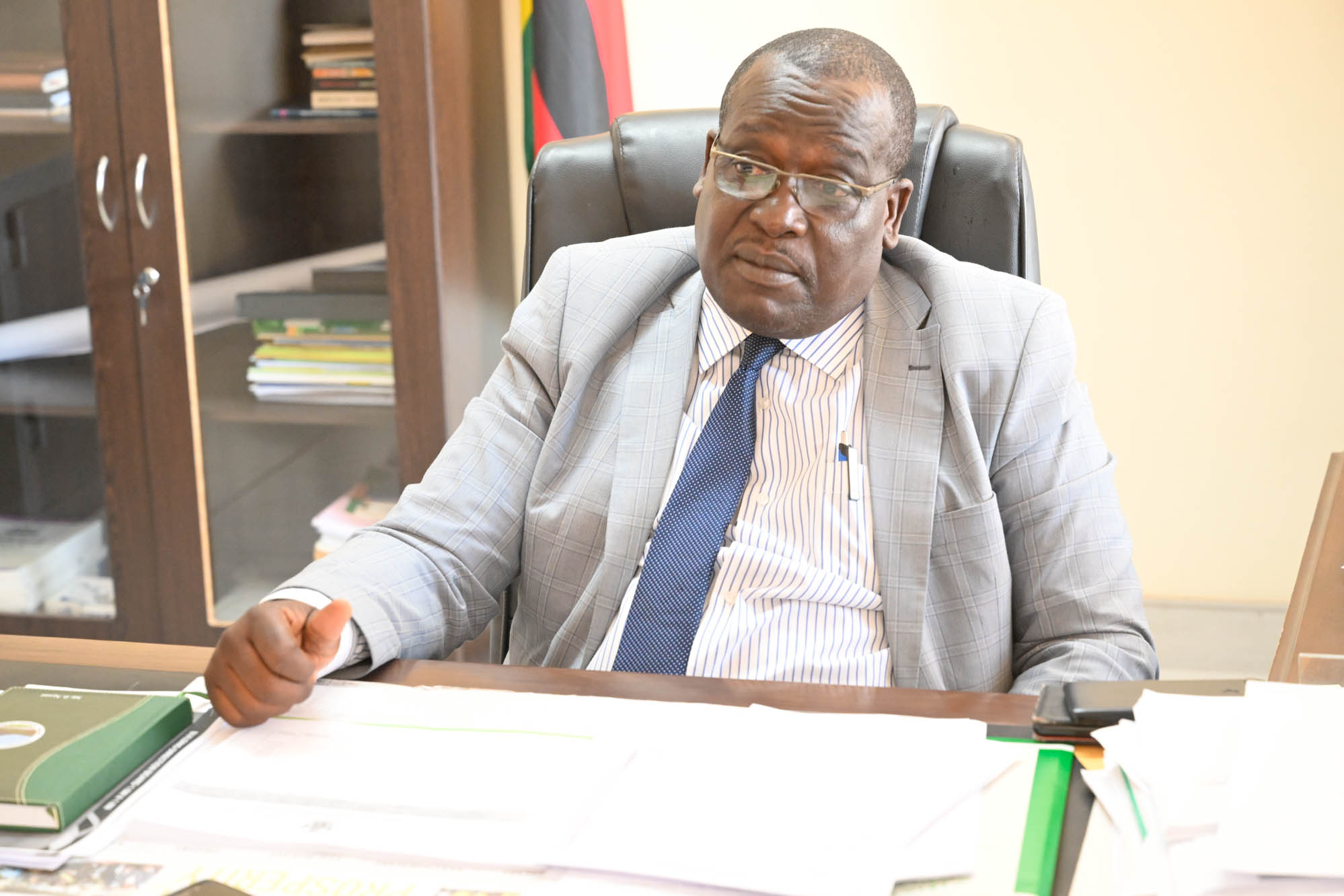
But, it’s not just about food. Clothing manufacturer Archer Textiles is also on the rebound, thanks to unstinting support from the government.
For me, the biggest performer by far will be the Treger Monarch, which is part of the Kango Group. They have since expanded their product line. Instead of focusing on domestic appliances, they are now into building materials as well. For your information, last year, the company reported capacity utilisation of about 90%.
However, there is still distress on some sectors, particularly among the heavy industries that supported the NRZ in particular and the logistics sector in general. If you remember, we used to assemble buses here, but that is no longer the case. The textile industry is also in the doldrums. But, as previously highlighted, things are looking up as demonstrated by the revival of Archer Textiles. We are happy, too, that Cotton Printers is now back in business as Cotton Pro. Baker’s Inn now produces 200,000 loaves per day at its Bulawayo bakery in response to Lobel’s expansion drive. So, there is a lot of activity going on. Dormant companies are coming back to life, while new firms, like Ocean Foods, are joining the fray.
Huni: From the way you are speaking, it is evident that there are a lot of economic activities to revive the manufacturing sector. However, some people, and here I mean a lot of people from Bulawayo, don’t seem to know and believe this. Where exactly is the disconnect?
Nyoni: I think it’s like the dollarisation mentality. People get stuck in this mentality of having a dollar in their hands even when they don’t need it. There is more than enough petrol and diesel in the country, electricity has not gone up, your water has not gone up; and so why are you chasing the dollar? No one can explain that. They are stuck in the past.
Like I have already said, what was Merlin is now Sunset Marketing. The person who is stuck in the Merlin mentality does not appreciate this new development. Yes, Merlin may be dead but in its place is a big, new company. It has simply taken over the premises because the premises are managed by the Old Mutual Pension Fund.
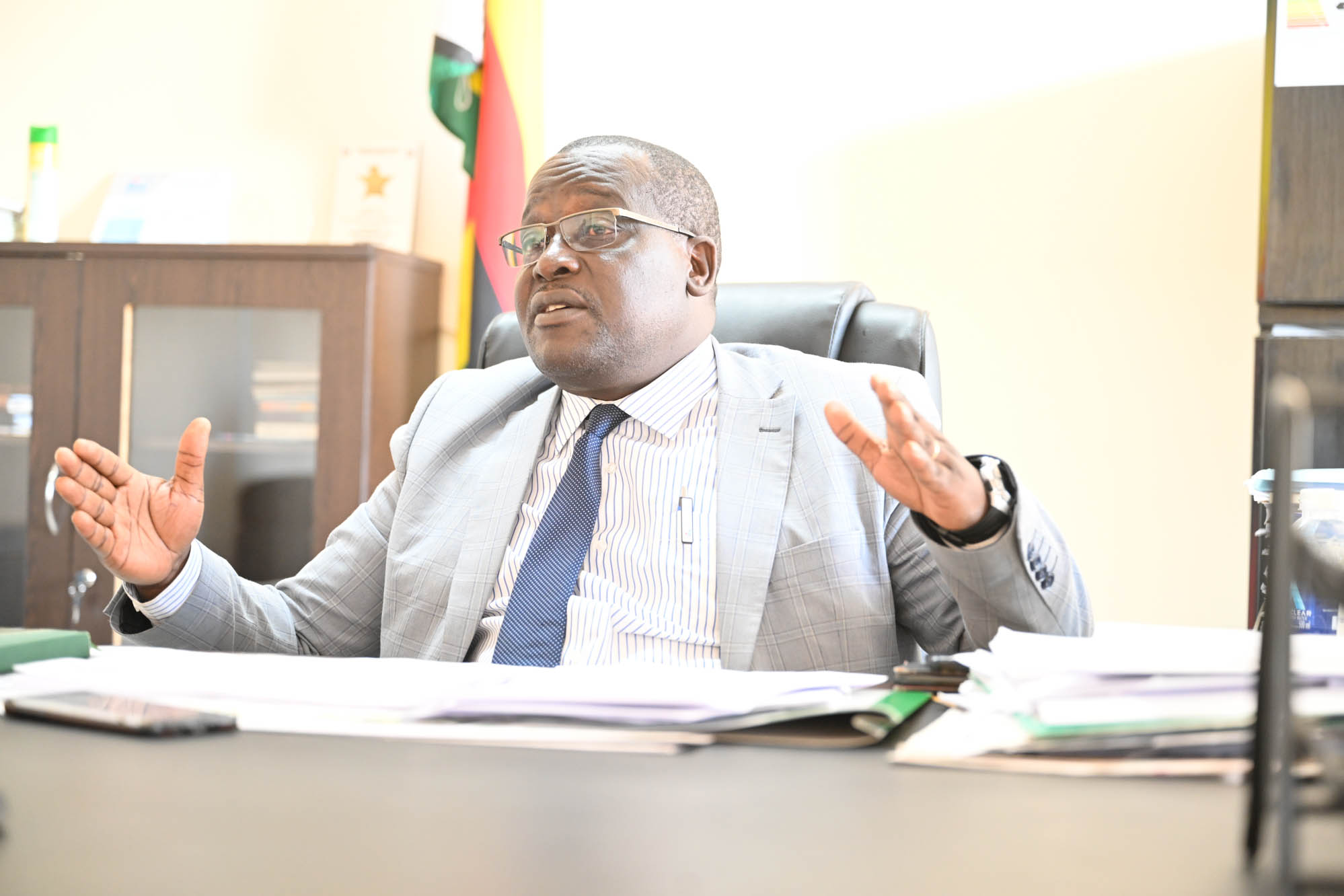
stuck with household names from the past. My position is let’s not dwell on the past”
I am an economist by training and I don’t go along with the view that you revive old companies. No, no, no. For me, it’s about giving the consumer what he/she wants. You want a towel; you don’t want Merlin. But that mentality is very difficult to inculcate into my father. He still wants to see his Merlin towel. There are people who are stuck with household names from the past. My position is let’s not dwell on the past.
Take traditional beer brewer, Ingwebu Ndlovu, which is the equivalent of Harare’s Rufaro Marketing. It went under, but it’s back in business now, and not only in terms of opaque beer but mahewu as well. Its products are found as far afield as Kwekwe. The company is exactly where it was. If you are curious about Turnall Asbestos, you can go and see for yourself. The company is now up and running. And if you want to know the reason behind its revival, look no further than farming. Don’t forget, farmers need pipes for irrigation.
Pretoria Portland Cement (PPC) has doubled its capacity since President Mnangagwa came into office. I am not exaggerating. You can check with them. The evidence is there. There is a lot of construction taking place across the country and cement is the backbone of the construction industry.
A lot is happening, but there are people still stuck in the past. Basically, I think people don’t know where to look. In addition, I believe we need better communication strategies to drive the message home.
Huni: What are you going to do to make sure that these people who are stuck in the past accept the new reality?
Nyoni: We have embarked on a programme of taking key decision-makers, like councillors, on road trips so that they can see for themselves what is happening on the ground. I am sure their verdict will be something like, “Ahh, we didn’t know that is what is happening on the ground”. I remember not so long ago, the [Bulawayo] Town Clerk telling the President that he didn’t know that the construction of the Gwayi-Shangani Dam was at such an advanced stage.
We have also taken journalists on these tours. We also target opinion leaders, including men and women of the cloth as well as tertiary students. We want them to see the reality for themselves. By doing this, we are doing our best to improve our communication strategies.
Huni: Now that you have spoken about the Gwayi-Shangani Dam, let’s talk some more about it. How important is that project for Bulawayo Province and do you really think that it will be a game-changer for the province?
Nyoni: It definitely will be a game-changer. Remember, one of the major obstacles to industrial recovery has been water, or rather the lack of it. I am sure you will recall media reports in 2021 on how companies such as United Refineries, Arenel and others were forced to hire water bowsers to keep the production wheels turning. These companies would sometimes go without water for three to four days before sending SOSes to council.
It needs no repeating that Bulawayo’s perennial water shortages were definitely a deterrent to would-be investors. Who wants to invest where there is no water? So the construction of the Gwayi-Shangani Dam is very exciting news not only for households but industry, too. As you know, agro-processing is about water, lots of it. It’s the same with tanneries, the beef industry, etc.
I always tell the Minister [for Provincial Affairs and Devolution] that once we have our own water and electricity, there will be vast changes to our economic landscape. Companies will expand and investors will flock to Bulawayo as they are beginning to do.
For planning purposes, water from the Gwayi-Shangani Dam will flow into a purification plant at Cowdray Park. From there it will find its way into the city’s various reservoirs. And here, we are talking of a whopping 220 megalitres per day, over and above the city council’s current output of 130-140 megalitres. That means Bulawayo will not experience any water shortages for the next 80 years. This will be a massive confidence-booster to those who wish to invest in Bulawayo Province.
The Gwayi-Shangani Dam will be definitely a game-changer for Bulawayo the city and Bulawayo the metropolitan province. Arenel has had to invest in boreholes, which provided them with an opportunity to diversify into water bottling. The company’s future expansion, therefore, does not necessarily hinge entirely on the Gwayi-Shangani Dam. But I know for a fact that a reliable source of water will give their operations a major filip.
A mega housing project, called King City, is coming up in the vicinity of the National University of Science and Technology (NUST). About 10,000 houses are earmarked for the development, so the Gwayi-Shangani Dam is a godsend. So how can anyone in Bulawayo Province not be excited about the Gwayi-Shangani Dam?
Huni: Bulawayo is regarded as one of the few cities with some of the best roads in the country, but we have noticed that some of the suburban roads are in bad shape. What are you doing to repair them?
Nyoni: True, some of our roads are in a mess. That is why His Excellency President Mnangagwa came up with the Emergency Road Rehabilitation Programme 2 (ERRP2). Let me hasten to add that, under NDS1, Bulawayo has set up a stakeholder-driven Provincial Economic Development Programme. The first priority under the programme is infrastructure — roads, water and sewerage, in that order.
We have around 160 km of roads in the city, most of which are in a bad state. When the President came up with ERRP2, we quickly moved in to repair some of the roads, especially the major ones, starting with Luveve.
The Bulawayo City Council didn’t spend a cent on repairing these roads under ERRP2. However, people should know that the repair work is a process, not an event. We have been facing challenges to do with the disbursement of funds from the Zimbabwe National Roads Administration (Zinara). I think they have slowed down from the middle of last year. This is why some of the projects have been stalled. I think there were other macro-economic considerations. Even on the devolution side, funds haven’t been coming at the rate we expected. However, we are not deterred. We will keep pushing to achieve our goals.
On the city council side, they got their parking partner and I have to say as sceptical as most people were, including me, I have seen them repairing some of the smaller roads. There is a lot more patching up of the roads going on, mainly in the city centre. ERRP2 is due to end in December and we hope to have finished all the rehabilitation works by then. But the rehabilitation programme will continue into the future with Zinara funding.
Huni: There have been constant clashes between the provincial offices and the city councils in most cities across Zimbabwe. How is the situation here in Bulawayo?
Nyoni: Generally, we have not had any serious problems working with the council outside the election period. All along we have been engaging in fruitful discussions with council officials. I think most councils, except maybe for Harare, have been very grateful for the injection of the devolution and ERRP2 funds. This is capital they could not have raised on their own. It freed them to do other things and they acknowledge it.
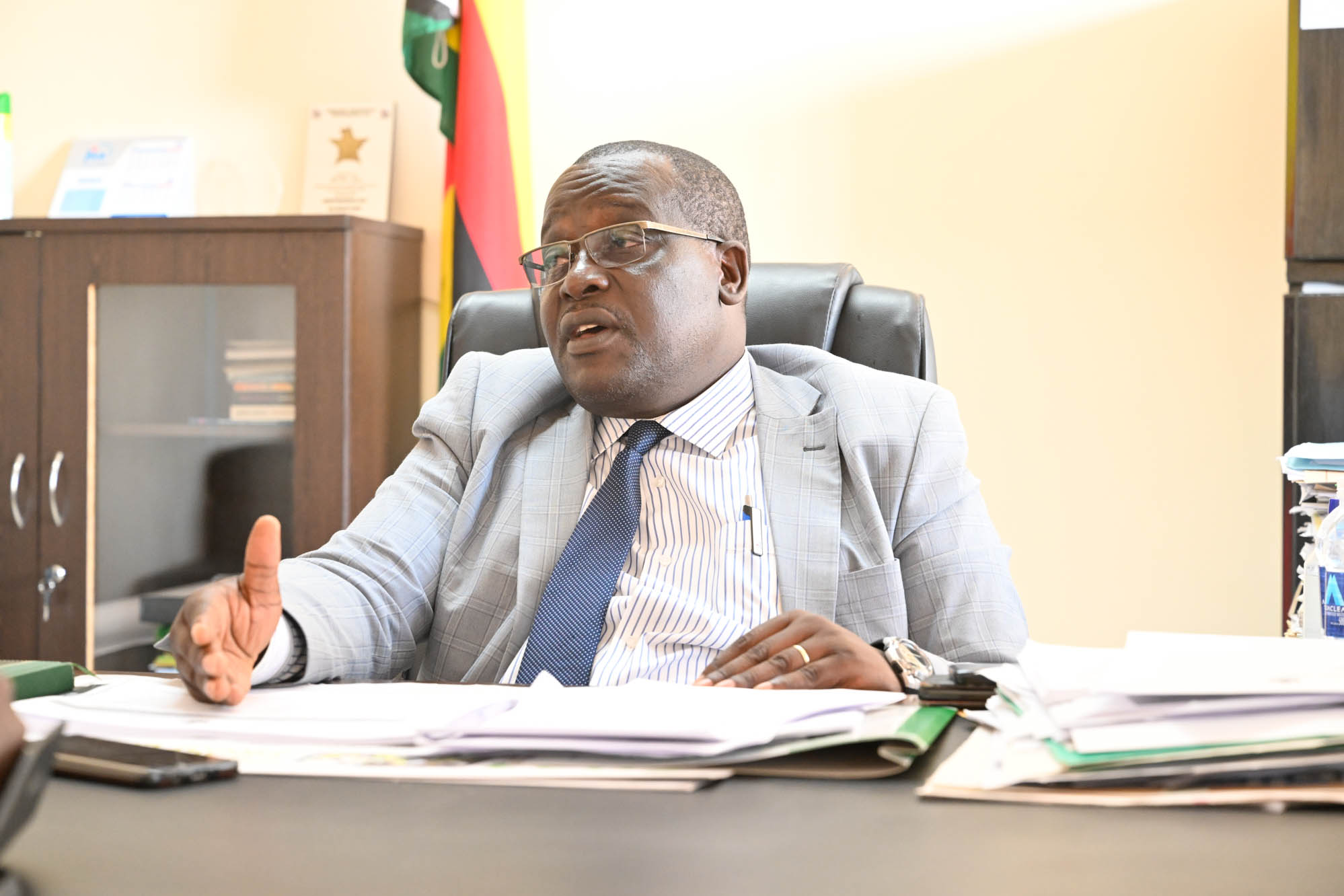
They can only blame the rains”
As Bulawayo Province, I think we have worked with the local council very well. The good thing is that we got to know each other right from the very beginning of our terms of office. We may have our political differences, but when we say let’s do this, most of the time, council listens to us. They have seen we mean well.
We have also been working well even NGOs operating in the province. All we require from them is total transparency. Now they know that they can’t just go anywhere without the consent of the Minister’s office. Of course. if I hear that they are at some place without prior notification, then clashes are inevitable. But, the good thing is that we are in constant dialogue with each other. This was one of the reasons why Bulawayo Province was at the forefront in the fight against the Covid pandemic. We kept the lines of communication open and listened to each other. Of course, we didn’t always agree, but sanity always prevailed at the end of the day.
Huni: What would you say have been some of the high-impact projects that have been undertaken by the Second Republic in Bulawayo Province?
Nyoni: Water, water, water. The timely interventions by the Second Republic boosted the water purification and pumping capacity of Bulawayo. Now everyone in Bulawayo knows that they cannot blame the government for lack of water. They can only blame the rains.
Secondly, government interventions in the sewarage reticulation system are something to be applauded. Remember there was a time, around 2019, when cholera and typhoid cases spiked to worrying levels. This was the result of a combination of lack of water and a poor reticulation system. Of course, the water problems are not over yet and that is why our eyes are firmly fixed on the Gwayi-Shangani Dam.
Thirdly, there was a total revamp of the health delivery system in the province. When Covid struck, unlike Harare which had Wilkins Hospital, our Thorngrove infectious Diseases Hospital was really in a bad state. Refurbishments were done at both Thorngrove and Ekusileni hospitals to cater for Covid-19 patients. The brainchild of the late Vice President Dr Joshua Mqabuko Nkomo, Ekusileni was built in 2001 as specialist hospital after the then-VP developed cancer and failed to access health care services locally. Now both hospitals look beautiful inside and out, along with their new buildings and equipment.
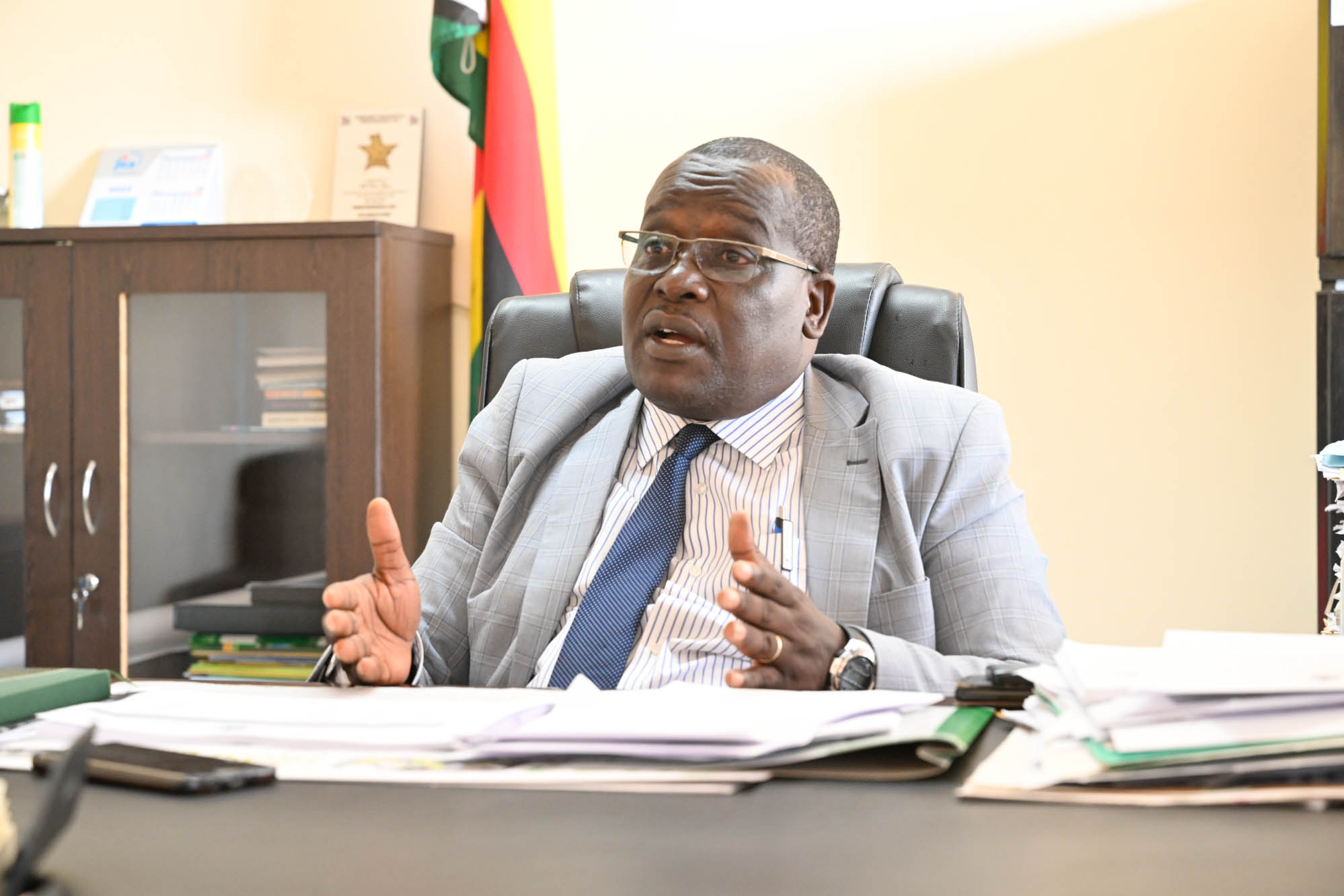
The United Bulawayo Hospital (UBH) is also currently undergoing extensive renovations under the Second Republic. As we speak, one of the country’s biggest laboratories has been built at UBH. A fistula operating centre has also been established for the benefit of pregnant women who experience complications during labour. In Cowdray Park, the government has constructed a new medical centre with state-of-the art equipment.
As you may be aware, most universities established after the University of Zimbabwe (UZ) tended to focus on teaching infrastructure and rarely paid attention to student accommodation. To address this anomaly, the Infrastructural Development Bank of Zimbabwe (IDBZ) has taken it upon itself to build hostels for students, starting with Bulawayo. The IDBZ has built state-of-the-art flats that can accommodate over 1,300 students under this initiative, the first of its kind in the country. The idea is to replicate the initiative at other State universities countrywide.
In terms of international travel, we can’t afford not to mention the revamped radar system at the Joshua Mqabuko Nkomo International Airport. Now leading airlines like Emirates, Ethiopian Airlines, etc, can land safely in Bulawayo.
Huni: Clearly, a lot is happening in the province. In terms of investment, has Bulawayo Province managed to attract new investors?
Nyoni: Yes, yes! Quite a number of new companies have invested in the province. Remember, I mentioned Sunset Marketing, Ocean Foods and Cotton Pro, among others, that have found Bulawayo’s investment climate conducive.
Huni: Secretary, every year, the Zimbabwe International Trade Fair (ZITF) is held in Bulawayo. Is Bulawayo Province benefiting from hosting that event and do you think ZITF is still relevant?
Nyoni: Yes, we are benefiting. And, yes, ZITF is still very relevant. Every year we try to make ZITF bigger and better by attracting more and more participants. We are benefiting in the sense that at the end of the day, all the accommodation is filled up during the ZITF week as most of the participants are mostly from outside Bulawayo.
We have also come to a mutual agreement with exhibitors from outside Bulawayo on the need to employ local labour for exhibition purposes. What this means in practice is that exhibitors are free to come up with the designs of their stands, but Bulawayo provides the labour force. The ministries have been receptive to this suggestion, but we are still facing some resistance from the private sector. But we expect them to follow suit.
By and large, business shoots up across the board. There are hotels and lodges which make more than a third of their annual income during the ZITF week. Besides ZITF, there is also the tourism expo, Sanganai/Hlanganani, as well as Mine Entra, the mining, engineering and transport expo.
If we add the latter two, some hotels and lodges can make even half of their annual income during these three events alone. During that period, every hospitality student is in employment. The taxi industry, the shops and the food outlets also enjoy brisk business, not to mention the nightclubs.
However, during these three events we run out of exhibition space, accommodation and conferencing facilities. During the ZITF week, if you go to any hotel, there will be five or more functions in the evening. To illustrate my point, this year, quite a number of ZITF exhibitors were forced to operate from tents because of the overwhelming numbers. In view of that, there is an urgent need for more infrastructure to accommodate the growing numbers of exhibitors.
Due to the shortage of accommodation, hotels and lodges in Bulawayo tend to hike their prices. We are engaging the relevant authorities to make sure this doesn’t happen in the future. We don’t want predatory prices that chase away exhibitors or their clients. In my opinion, there is room for one or two additional three-star hotels in Bulawayo.
Huni: Let’s move to the Joshua Mqabuko Nkomo International Airport. Has this airport really changed the face of Bulawayo Province?
Nyoni: It has changed the face of the province tremendously. When people get to the airport, they now see Bulawayo in a completely different light. Before the Covid pandemic, you had Air Zimbabwe, fastjet and South African Airways landing at the airport. That was it.
Now there are more airlines flying in and out of the airport. Passengers flying to London or China no longer need to travel to Harare first. fastjet is now flying directly from Bulawayo to South Africa about three or four times per day. Thanks to the Second Republic for revamping the airport, which is now more spacious. All we need now are more airlines.
Huni: With regards to devolution, how much has it assisted your province?
Nyoni: Devolution has assisted the province in more ways than one. Let’s talk about Cowdray Park, for example. The first phase was very formal as people were settled on serviced land. However, the second phase was unplanned as thousands of homeseekers settled themselves without the council’s greenlight since there were no social amenities, such as schools or clinics. Government subsequently availed devolution funds for the purposes of building schools and a health care facility for Cowdray Park residents, much to their relief.
In addition, burst water pipes and flowing sewage had become the order of the day in most of Bulawayo’s suburbs. Again, the government used devolution funds to address these problems. This totally changed the way people viewed devolution funds.
Huni: In terms of attracting investment, I see you have managed to attract quite a number of investors. How have you been able to do this?
Nyoni: One of the things that we have done extensively is to work with council through their economic development officer. That officer is our interface for planning purposes. The first thing we have done is to make it easy for people to access commercial stands. We have made sure that there are minimum obstacles in terms of accessing land for development.
As the provincial office, we have a database of all the factory spaces available and we know how to link potential investors with the factory owners. We know the location of factories that are already connected to different kinds of transportation systems. When we meet with potential investors, we do so with Zimbabwe Investment and Development Agency (ZIDA) officials. If the potential investor wants to venture into tourism, we make sure the Zimbabwe Tourism Authority (ZTA) is represented at the meeting. We all meet in our boardroom and deal with all the relevant issues such that by the time the investor leaves, all their questions will have been answered.
Huni: So if an investor is to come knocking on your door today asking which area he/she can invest in, which areas would you recommend?
Nyoni: Due to the abundance of raw materials, I would advise the investor to invest in the agro-processing industry. The sector is already overcrowded, as it were, but there is room for more players. For example, if one is to invest in cotton, we need to expand the value chain to include clothing. The two or three companies that are currently in this industry cannot replace the 20 or 30 that existed before.
However, I must say that I am disappointed that we are exporting raw cotton at the expense of the hardworking farmers, who end up earning a pittance. To address this anomaly, we are encouraging textile companies to venture into contract farming. Thanks to this initiative, we now have farmers in Nkayi and Beitbridge who are now growing cotton on a commercial scale.
We also want new investors in the food processing industry. It’s fine to talk about beef, but what about tinned meat and condiments like tomatoes, onions, etc? We are buying frozen South African foods and I think it’s time to put a stop to that. If you go to our fresh vegetable and fruit markets, you will find tonnes of fruits and vegetables going bad. We should be canning and exporting all these perishables.
As Bulawayo Province, all our strategies are about value addition and beneficiation. In the leather industry, for example, we are going to have a computerised design studio. It’s being funded by Comesa [the Common Market for Eastern and Southern Africa] with the intention of bringing back the leather industry to its former glory. The Leather Institute of Zimbabwe is offering training to all artisans keen on venturing into the manufacture of shoes and accessories such as handbags, belts, wallets, hats, etc.
Huni: Over the years, one of the problems that Bulawayo Province has been facing is the migration of people to Harare, South Africa and Botswana in search of greener pastures. How much has the province suffered due to this problem?
Nyoni: Admittedly, quite a number of skilled people and entrepreneurs have left the province. We are in the process of organising a provincial investment conference to appraise our sons and daughters on the numerous investment opportunities available locally. They are keen to come back home, but lack information on which areas are open for business. The purpose of this conference, therefore, is to answer all their questions and advise them on the way forward.
We want to make it easy for our people to come back and do their business with as little hassle as possible. We are not saying to them “Come tomorrow”. All we tell them is to keep doing whatever they are doing in South Africa or elsewhere, while investing something back home. We have engineers, electricians, architects, plumbers, etc, who are working in South Africa who want to come back home and start their own businesses. They are at the risk of xenophobia there and so we want to welcome them back home. An investment back home is the most secure investment in one’s life. Investing in a foreign country can be risky.
The conference we are organising has been received enthusiastically by thousands of our people in the Diaspora. They are some migrants who want to attend this conference from as far afield as the UK, US, Canada, etc. In fact, the investment indaba is not our idea per se, but a response to enquiries from the Diaspora.
Huni: In trying to revive industries in the province and attracting investors, what are some of the challenges you are facing?
Nyoni: If you had asked me that question three or four years ago, I would have said water and energy. These two used to be the biggest challenges, but now they are being addressed holistically, thanks to the New Dispensation. To give an example, we have not had power outages at my house for over a week. It means our energy challenges are being sorted out at Hwange. I also know that the Gwayi-Shangani Dam is work-in-progress and Bulawayo’s water woes will soon be a thing of the past.
Land for expansion is probably out biggest headache for now. As I have already alluded to earlier on, Bulawayo Province currently sits on 1,700 hectares and we are fast running out of space. When you drive around you will see a number of factory shells coming up. We need to avail more land for businesses to expand and for residential purposes, too. This is going to become topical, I think in the next 12 months. We will soon run out of residential land at a time when the country is enjoying a construction boom. In short, we need land for smart cities to thrive.
Perhaps, our biggest problem is to do with the rampant abuse of drugs. And this is something that is unique to our province. It’s unique in the sense that the children abusing drugs are under the custody of relatives or grandparents while their parents are in the Diaspora.
The parents send money home for the children’s upkeep. However, part of the money is diverted to host what they call vuzu or naked parties, which have been turned into drug havens. Here, you will see schoolchildren as young as 13, 14, 15 or 16 high on a variety of drugs. The parents of these children have been out of the country for so long and are not aware of what is happening here. They are under the impression that their sons and daughters are still young and innocent. They send money to the grannies who can’t keep a tight leash these wayward kids.
The police are trying their best to deal with this menace, but with limited success. Every school holiday, the police have their work cut out for them. What the wayward kids are doing is scary and if we are not careful this will be a wasted generation. They are awash with cash. The parents feel guilty that they are in a faraway country and so they send their children loads of cash to compensate for their absence. We have engaged the Department of Social Welfare and some NGOs in a bid to tame this scourge.
Apart from drug abuse, Bulawayo Metropolitan Province also has to contend with an upsurge in cross-border crime. There are some Zimbabweans who migrated to South Africa and failed to make it there. They have turned to crime instead to make a living as armed robbers and subsequently cross into Bulawayo, commit all sorts of heinous crimes and flee back. Once in a while the police will catch up their cousin who is a suspected accomplice in the robbery. He will be drinking like a fish in Plumtree and one can tell that this is dirty money.
I am glad that police seem to be getting on top of the situation now. In 2021/2022, the armed robberies were happening almost every month, but it has receded now. Our biggest fear is that when the next armed robbery takes place, it is likely to be more savage than the last one.
Finally, I am appealing for speedy disbursements of devolution funds. When the programme started, it created lots of excitement, but if it takes four years to repair one minor road, people begin to wonder what is going on. It is such delays in the disbursement of devolution funds that fuel all these misplaced allegations of marginalisation.
Huni: With all the developments taking place in Bulawayo Province, where do you think the province will be in the next five years?
Nyoni: One of my dreams is to see the establishment of a recapitalisation fund targeted at Bulawayo Province. Not a fortune, but a revolving fund of, say, US$10-US$20 million. We have gone around the province and discovered that most companies are not looking for much in terms of their capital requirements. Maybe a minimum of US$500,000 to around US$2 million maximum. These companies have a good track record. When they access this money, they will double or even treble their capacity utilisation.
The people you hear talking about US$100 million or US$200 million are those who attach the revival of the province to yesteryear companies. The problem with that is that the moment you invest into an old company like Merlin, the first US$10 million goes to paying off creditors. Why would the government allow itself to be dragged into Merlin’s debts? That is why I asked earlier on: Do you want a towel or you want Merlin? With US$3 million, one can go to China and procure the latest machinery to produce towels. In no time, you will have a debt-free factory. In my humble opinion, a revolving fund will go a long way in reviving industries throughout the province.
If water problems are resolved as we expect, our electricity challenges addressed and we have this revolving fund in place, our per capita GDP will be far ahead of all the other provinces, Harare included.
Huni: So for Bulawayo Province, the Second Republic has been doing quite a lot? What . . .?
Nyoni: Yes, yes, yes! What is the Second Republic to me? It’s a trajectory. A development trajectory which is very clear. If you get out of your attitudes, your moods, etc, there is a clear development trajectory under the Second Republic in Bulawayo Province. President Mnangagwa has shown beyond any shadow of doubt that he can sustain that development trajectory.
The year 2019 wasn’t easy. It was quite easy for him to impose price controls, but he didn’t do that because he was clear on what direction the country was going. I have warned most of my friends in the Diaspora not to worry about who they liked or disliked, but to just watch the trajectory. What does it do? It addresses infrastructure. Development, my brother, is incremental. The brick you have laid, someone else will come forward to lay the second, third, fourth one, etc. It’s as simple as that.
The trajectory is our salvation. Development is about a trajectory. Long after President Mnangagwa is gone, they will remember the infrastructure he built. They will remember that that was the turning point for this country. I studied at Stellenbosch University in South Africa and so I have quite a number of friends working in various government departments across the Limpopo.
I always tell them that Zimbabwe will address its power problems way, way, before you guys. They say “Ahhh, Comrade, you are lying?” I hit back: “Watch this space!” We are going to resolve our power woes way, way before South Africa thanks to this “brick-by-brick” trajectory ushered in by the Second Republic. I know what Hwange Units 7 and 8 mean to this country. I have no doubt that we will maintain this trajectory because President Mnangagwa is a man of action, a man who is true to his word.

